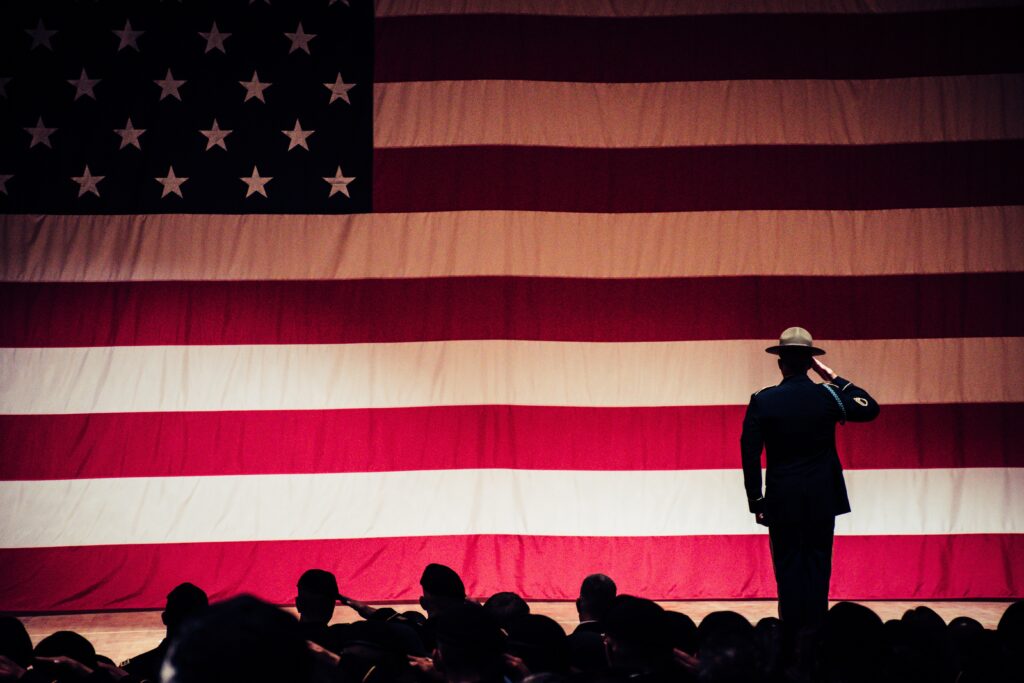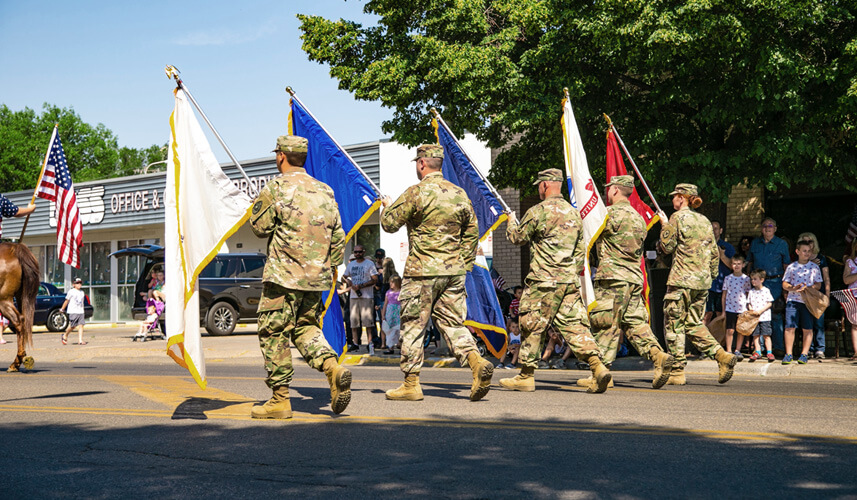
Our nation’s tapestry is richly adorned with threads of bravery and sacrifice, woven together by the unwavering spirit of those who have gallantly worn the uniform and stood resolute on the front lines to safeguard our cherished freedoms. While the bravery of veterans is often associated with the battlegrounds, there exists an alternate avenue through which we express our profound respect for their service — a path paved with unity, tradition, and jubilant celebration: the veterans’ parades. As we stand on the threshold of the impending National Veterans Parade slated for November 12, it seems fitting to embark on a journey through time, unearthing the origins and evolution of this timeless tribute.
Embarking on a Historical Odyssey: The History of Veterans’ Parades
The roots of veterans’ parades delve deep into the annals of American history, tracing back to pivotal moments when the echoes of conflict were still reverberating. One of the earliest recorded instances materialized in the aftermath of the Civil War — an epoch marked by turmoil and metamorphosis. Union soldiers, emerging from the crucible of strife, strode with purpose through the thoroughfares of the nation’s capital. Yet, this was no ordinary march; it was a vivid tableau of unity and restoration, a poignant acknowledgment of sacrifices rendered and losses endured, and an embodiment of a collective determination to mend the wounds inflicted by war. Our Veterans of the Confederacy paid their own homage to those fellow Americans who served, died, and survived to rebuild their lives and our Country.
Following World War I, veterans’ parades underwent a significant transformation, marking a pivotal moment in commemorative history. Initially commemorative as Armistice Day, November 11th was marked at the signing of that document that was to signify “The War to End All Wars.” Amid the aftermath of a global conflict, these parades emerged as poignant tools for remembrance and societal healing. With solemn reflections, they paid tribute to the sacrifices of war’s participants, shedding light on the immense toll it took on both individuals and communities. Through their participation, these parades offered a platform for veterans to share their experiences, rekindling connections with comrades who bore similar burdens. Beyond honoring bravery and resilience, these gatherings aimed to foster unity and solidarity among those profoundly touched by the war, reflecting the shared bond that emerged from these trials.
After World War II, veterans’ parades took on a renewed and profound significance, symbolizing collective gratitude and admiration for those who courageously served in the global conflict. These parades celebrated veterans’ valor and sacrifices while serving as poignant reminders of the costs endured for freedom and peace. As the world emerged from the war’s shadows, these events provided platforms for communities to unite and express profound appreciation. Balancing celebration and solemnity, these parades marked victory over tyranny while acknowledging veterans’ daunting challenges. By 1954, with President Eisenhower proclaiming November 11th Veterans Day, a lasting tribute was born. These gatherings allowed veterans to share experiences, bridging generational gaps and forging connections among eyewitnesses of history. Recognizing veterans’ resilience, dedication, and sacrifices, World War II-era parades played an essential role in ensuring the enduring remembrance and reverence for that generation’s stories.
The Vietnam War ushered in a unique chapter in the narrative of veterans’ parades, marked by a complex mixture of emotions and societal attitudes. Unlike previous conflicts, the Vietnam War evoked a range of responses, from controversy and protest to compassion and recognition. In the aftermath of the war, veterans’ parades served as a platform not only to honor the service and sacrifices of Vietnam veterans but also to acknowledge the challenges they faced upon their return home.
The aftermath of Operation Desert Storm brought a distinct flavor to the realm of veterans’ parades, reflecting a mix of relief, patriotism, and appreciation. Following the swift and decisive military campaign, veterans’ parades served as a platform to honor the service and sacrifices of those who had participated in the conflict, while also celebrating the successful outcome of the mission. These parades carried a sense of national unity and pride, as they marked a moment when military prowess had achieved its objectives with minimal casualties. Desert Storm veterans were hailed for their efficiency and dedication, and the parades symbolized a collective acknowledgment of their contributions to safeguarding national interests and international stability. Amid the celebratory atmosphere, these parades offered an opportunity for veterans to share their experiences and reflect on their role in a crucial chapter of global history. The veterans of Operation Desert Storm were met with gratitude and admiration, making these parades a testament to the resilience, professionalism, and commitment of those who served during that period.
The 2000s, and specifically the post-9/11 surge in patriotism, saw veterans’ parades adapt to the complex landscape of modern conflicts and the evolving nature of commemorations. With ongoing military engagements in Afghanistan and Iraq, these parades took on a somber and reflective tone, as they paid tribute to the sacrifices of servicemen and women who were engaged in active duty in these regions. These parades served as reminders of the ongoing commitment and dedication of the armed forces, acknowledging the challenges faced by veterans and their families in an era of extended deployments and evolving threats. Unlike previous conflicts, the 2000s-era parades often carried a heightened awareness of the toll that continuous service can take on individuals and families. These parades aimed to honor the resilience and courage of veterans who served in the midst of complex geopolitical scenarios, highlighting the unique sacrifices and experiences they endured. Amidst the challenges of the modern age, veterans’ parades of the 2000s aimed to provide a space of support, recognition, and unity for those who had served in the face of evolving global challenges.
Prelude to the National Veterans Parade
As the National Veterans Parade draws near on the horizon of November 12, we stand at the juncture of tradition and modernity, where history converges with the future. It’s a moment when communities across the expanse of our nation converge to enshrine the legacy of veterans, to pay homage to those who have defended our freedoms, and to jubilantly celebrate the enduring spirit of service that binds us.
Whether one wears the mantle of a veteran, carries the legacy as a family member, or stands as a patriot deeply moved by the sacrifices of those in uniform, the National Veterans Parade beckons as a realm to reflect, stand in solidarity, and earnestly express gratitude. Join us on this expedition as we bear the torch of remembrance and honor our veterans not merely through words, but also through the unity that these parades epitomize — bridging past, present, and future within a tapestry of profound appreciation.
The National Veterans Parade Foundation takes immense pride in presenting the very first National Veterans Parade!
Mark your calendars for Sunday, November 12th, 2023, as Constitution Avenue transforms into a stage for Veterans Organizations, Floats, Specialty Vehicles, and Marching Bands. Together, we will join in a resounding tribute to our Nation’s Veteran Community, expressing our unwavering gratitude for their unwavering commitment to safeguarding and preserving the United States. We thank all of you who have chosen to support our efforts and encourage all Patriotic Americans to contribute in any way to volunteer, participate, and support our effort with a contribution, in time or finance.
